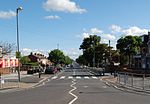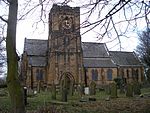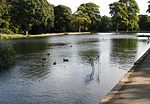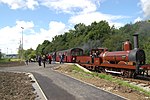Ardsley railway station
1857 establishments in EnglandBeeching closures in EnglandDisused railway stations in LeedsFormer Great Northern Railway stationsPages with no open date in Infobox station ... and 3 more
Railway stations in Great Britain closed in 1964Railway stations in Great Britain opened in 1857Use British English from June 2016
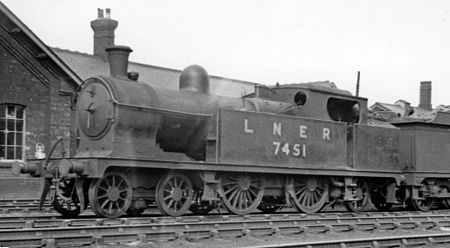
Ardsley railway station was situated on the Great Northern Railway between Tingley and Lofthouse and Outwood on the main line and west of Stanley on the LNER & LMS Methley Joint Railway. It was built to serve the village of East Ardsley near Wakefield in the English county of West Yorkshire.
Excerpt from the Wikipedia article Ardsley railway station (License: CC BY-SA 3.0, Authors, Images).Ardsley railway station
Scampston Drive, Leeds Middleton
Geographical coordinates (GPS) Address Nearby Places Show on map
Geographical coordinates (GPS)
| Latitude | Longitude |
|---|---|
| N 53.7326 ° | E -1.5378 ° |
Address
Scampston Drive (Stonebridge Fold)
Scampston Drive
WF3 2FF Leeds, Middleton
England, United Kingdom
Open on Google Maps




